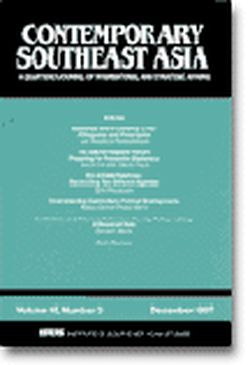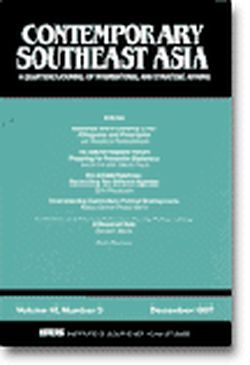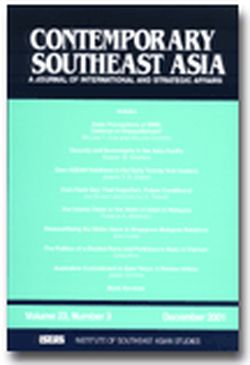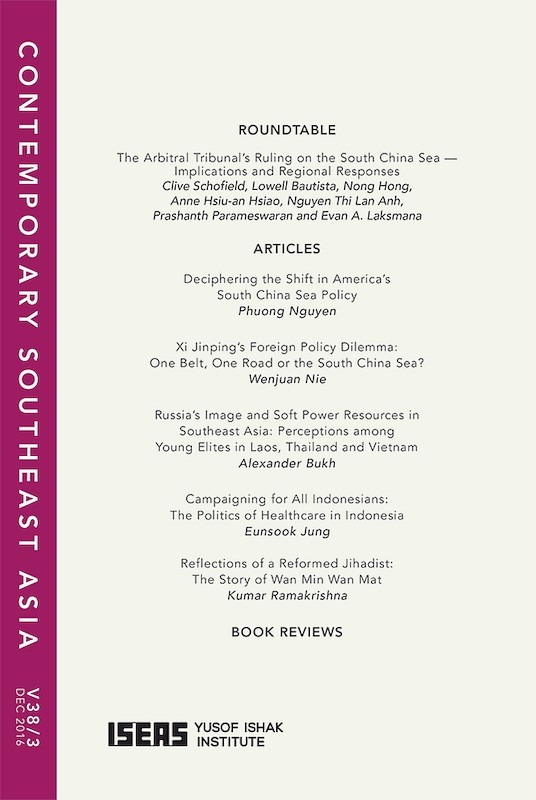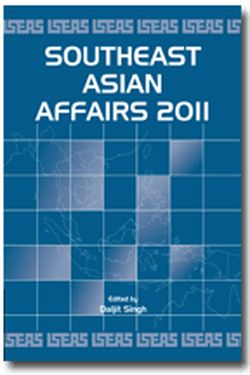Contemporary Southeast Asia: A Journal of International and Strategic Affairs Vol. 16/1 (June 1994)
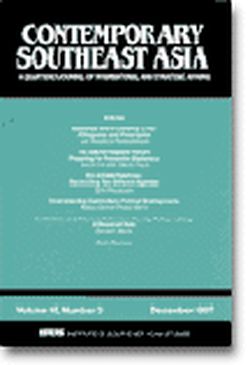
Date of publication:
June 1994
Number of pages:
115
Code:
CS16/1
Contents
-
Preliminary pages
- ARTICLES
-
A Vision of Southeast Asia in the Year 2000: Towards a Common Economic Regime, by Narongchai Akrasanee, David Stifel, authors see abstractIn a region of much diversity, the Southeast Asian nations are converging on a single economic norm. Although the emergence of this common economic regime is drawing the region closer together, it will not lead to a blurring of the distinct cultures and philosophies of each of the nations there. These economic changes are realistically unidirectional, and while they should benefit the people of Southeast Asia, the adjustments will not be easy. The countries in the region can work together to assure that this adjustment process is as painless as possible. First, efforts can be made to constructively assist the disadvantaged in an increasingly competitive international economic environment. Second, the internationalization of economic transactions will require greater commonality of standards and practices. Finally, sensitivity will be required to address the issue of duality in the regional economies which is being accentuated by the dissolution of economic frontiers.
-
Multilateral Security in the Asia-Pacific Region and its Impact on Chinese Interests: Views from Beijing, by Banning Garrett, Bonnie Glaser, authors see abstractThe Chinese assess their involvement in multilateral security arramgements in the context of the evolving international situation in the Asia-Pacific region, which they view to be largely favourable to Chinese interests.They have been primarily concerned that China not be the odd country out on this issue and that it head off potential threats to Chinese interest that could result from some of the multilateral schemes being promoted in the region. Beijing will likely continue to maintain a cautious stance towards multilateralism and wait for other countries to take the initiative while emphasizing that most security problems in the region are not amenable to multilateral solutions. Chinese experts nevertheless view increasing multilateralism in the region as inevtable and have concluded that non-participation in the process could be riskier for China that selective involvement. The Chinese expect that bilateral relations and the balance of power among the major powers will continue to be the primary factors affecting stability in the Asia-Pacific, not a multilateral security structure. The majority of Chinese specialists portray multilateralism as largely irrelevant - or potentially damaging - to effort aimed at solving or managing most of the key disputes in the Asia-Pacific region. These issues include bilateral territorial disputes such as those between Russia and Japan, and between China and its neighbours, Russia, Japan, Vietnam, and India; the dispute over Spratly Islands in the South China Sea; and the problem of reunification of Taiwan and the Mainland.
-
Recent Development in Sino-Indonesian Relations: An Indonesian View, by Rizal Sukma, author see abstractIt has been just over three years since Indonesia and China restores diplomatic relations in August 1990. However, those relations have been marred by some minor frictions. This article addresses two recent issues in Sino-Indonesian relations, namely, President Lee Teng-hui's visit to Indonesia which invited strong protests from China, and Indonesia's strong reaction to China's expression of "concern" over the labour strife which flared into anti-Chinese rioting in Medan, Indonesia, in April 1994. It argues that various sensitive issues, particularly ethnic Chinese minority problems, still hang over Sino-Indonesian relations. In this regard, China needs to understand more about the nature od Sino-Indonesian relations,and both sides need to understand more about each other.
-
"The Peace Dividend" in Southeast Asia: The Political Economy of Thai-Vietnamese Relations, by Surin Maisrikrod, author see abstractThis article reassesses Thai-Vietnamese relations after the 1991-92 political settlement of the Cambodian problem. With that divisive issue removed, Thailand and Vietnam embarked on a new path of relations which is increasingly characterized by economic interests.The article examines the extent to which this nes emphasis, which is more co-operative than confrontational, can contribute to reducing historical political animosity between the two countries, which was largely due to their competition for influence over Laos and Cambodia. Arguing that the Thai-Vietnamese rapprochement is "the peace dividend" in Southeast Asia after the Cold War, the article links the shift in foreign policy orientation of both countries to changes in the international political economy as well as to changes that ate taking place in Thailand and Vietnam - such as the rise of pluralist politics in Thailand and the adoption of a market approach to economic development in Vietnam. In theoretical terms, the article looks at how countries, whose foreign policy goals during the Cold War were more or less guided by their "patrons" - the United States for Thailand and the former Soviet Union for Vietnam - are now forced to decide their own foreign policy goals and the changes they have to make in their domestic structure to fulfil such goals. In the Thai-Vietnamese case, both have decided to use foreign policy as a means to respond to the immediate domestic need which is economic development.
-
The Curse of the Weak State: Leadership Imperatives for the Ramos Government, by Wilfrido Villacorta, author see abstractAt the root of the weakness of the Philippine state is its inability to dissociate itself from the interest of oligarchy. In the Philippines, the landed elite also dominates the industrial sector. This oligopolistic contro, of the economy replicates itself in the political system. Most law-makers have either come from or have been supported by the landed-capitalist elite. The bereaucracy is likewise not insulated from these vested interests. Although the Ramos regime offers the rhetoric of transformational leadership, it has yet to provide solid evidence of it's determination to establish a stromg state by taking on the oligarchy and in restructuring society.
-
Southeast Asia, Russia and Ex-Soviet Republics: Expanding the Links, by Pushpa Thambipillai, author see abstractThe break-up of the Soviet Union into independent states has contributed to an expanded network of relations, including with Southeast Asian countries which have been attracted by the encouraging signs in political and economic linkages. This promising environment in the initial years (1991-92) rapidly gave way to pessimism. The following period (from mid-1993) saw most of the ex-republics, including, including Russia, immersed in state-building priorities. Nevertheless, there has been some effort, especially among the ASEAN states, Russia and some of the Central Asian republics, at bilateral and multilateral interactions. Russia, as the primary beneficiary of the USSR's legacy, enjoys the lion's share of the links. ASEAN has recognized Russia's role in the international affairs of the Southeast Asian region and has given it guest status in the ASEAN Annual Ministerial Meeting and in the ASEAN Regional Forum on security.
- BOOK REVIEWS
-
BOOK REVIEW: Vietnam and the Rule of Law edited by Carlyle A Thayer and David G Marr, by David Koh Wee Hock, author


